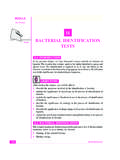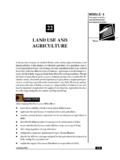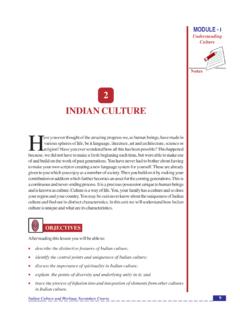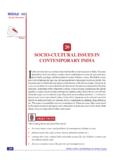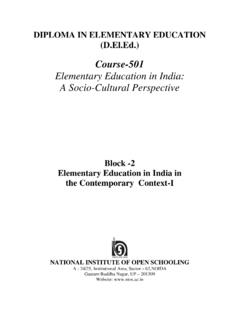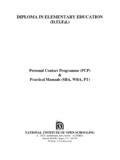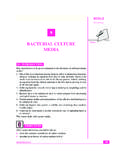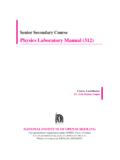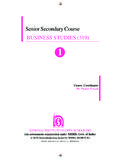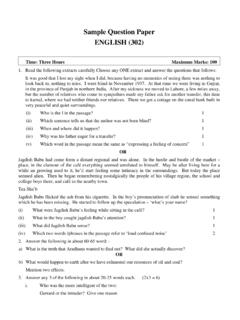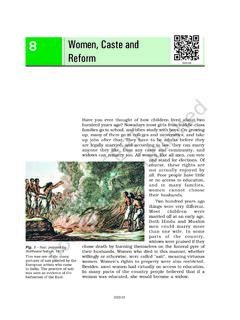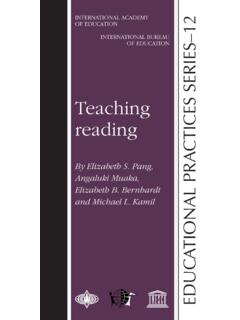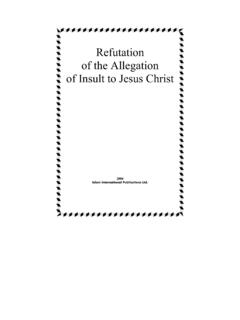Transcription of 3 ANCIENT INDIA D
1 ANCIENT IndiaNotesIndian Culture and Heritage Secondary Course 18 MODULE - IIHistory andCulture throughthe Ages3 ANCIENT INDIADo you think that the culture of Indian people has been the same since the beginning?The answer is no. No culture remains the same. And this is true of INDIA as has gone through many phases of change. Do you know why these changesoccur? This is because every dynasty, every invader who comes and settles down in thecountry leaves their marks on the culture of that country. In order to understand the presentculture of Indian people, it is necessary to understand the process it has gone through inthe past.
2 Thus, in this lesson we will attempt to take a look at the life of the people ofAncient INDIA . You will read about the various stages of ANCIENT Indian history from theHarappan times through Vedic, Mauryan and Gupta periods. The emphasis is on thechanging nature of Indian society with corresponding changes in society and culture. Whenwe read history we can understand how the modern world has emerged over long centuriesof development. It is important to appreciate what we have achieved in the past to makeour future worthwhile. OBJECTIVESA fter reading this lesson you will be able to: appreciate the importance and relevance of studying history; recognise the Harappan culture as the first known urban culture in INDIA ; examine the nature of Vedic society, religion and philosophy; explain reasons for the rise of Jainism and Buddhism; trace the early history of south INDIA during this period; review significant cultural developments during the rule of successive empires.
3 And examine the general dynamism of cultural developments in ANCIENT IndiaNotes 19 Indian Culture and Heritage Secondary CourseMODULE - IIHistory andCulture throughthe Ages IMPORTANCE OF STUDYING HISTORYI am sure you have often asked yourself why you are studying history. Studying history isone way of getting to know the past. History is an attempt to understand how and why ourancestors lived as they did, what difficulties they met with and in what manner they overcamethem. It is important for you to be acquainted with the past to understand better what ishappening in the INDIA of today.
4 After going through this lesson you will come to know thestory of your country, which started many centuries is no longer treated as merely a study of dates and events and that too largely onlypolitical events. Its scope has been widened to include many aspects of life. These includethe study of patterns of life, which we call culture. Culture was once defined as that whichrelates to art, architecture, literature and philosophy. Now it includes all the activities of asociety. Therefore the emphasis of history has shifted from the study of only the uppergroups of society to all levels of society.
5 It now covers information on kings and statesmenas well as on ordinary people who make history. It includes the study of art and architecture,of the evolution of langauges in INDIA , literature and religion. Now we do not look only atwhat was happening at the aristocratic level of society. We also try to reconstruct theinterests and concerns of people at lower levels. This makes history more interesting andhelps us understand our society for people that went into the making of our society, at both the aristocratic and the ordinarylevel, were not all indigenous to INDIA , to start with.
6 Many came from other regions andsettled down in INDIA . They married locally, intermixed with the exisiting people and becamea part of Indian society. Our society, therefore, has a rich heritage of different kinds ofpeople. Because of this large variety of people, there has been an equally large variety ofreligions, langauges, and customs in our correct understanding of history depends on two things. One is a careful and criticaluse of source material given to us by historians defending certain statements which shouldbe decided on rational analysis. Secondly, historical events have causes and these causesshould be fully examined.
7 Above all, even the past must be subjected to a critical is only in this way that historical knowledge will past of INDIA goes back several thousand years. We learn about it from the evidencewhich our ancestors have left behind. For the near past we have written and printedrecords. For times when printing was not known, there are records written by hand onpaper. But earlier still, when paper was not made, records were written on dried palmleaves, the bark of the birch tree and plates of copper and in some cases, they wereinscribed on large rocks, pillars, stones walls or tablets made of clay and stone.
8 There wasa time still further back when even writing was unknown. Our knowledge of the life ofpeople in those ANCIENT days comes from the objects which they left behind, for example, ANCIENT IndiaNotesIndian Culture and Heritage Secondary Course 20 MODULE - IIHistory andCulture throughthe Agestheir pottery or their weapons and tools. These are things which are solid and which youcan see and touch and these have sometimes to be literally dug out of the earth. They areall clues in the game of a historical treasure hunt but they form a part of our culture. Butthese clues can be of many kinds.
9 The clues most commonly used are are ANCIENT books, written either on dried palm leaves or the thick bark of thebirch tree, or on paper. (Generally the latter kind have survived, though books written onpaper are not as old as the others). Some of the languages in which the very old books arewritten are languages which we in INDIA do not use in everyday life any more, such as Paliand Prakrit. Others are written in Sanskrit and arabic , which we still study and sometimesuse in our religious ceremonies although we do not use them at home. Another languageTamil, which is spoken in South INDIA and whose literature goes to an early period in usedeven today.
10 These are called classical langauges and the history of many parts of theworld is recorded in various classical langauges. In Europe, ANCIENT manuscripts wereoften writen in Greek and Latin; in western Asia, they were written in arabic and Hebrew,and in China, classical Chinese was used. ANCIENT INDIAI ndia has a continuous history covering a very long period. Evidence of neolithic habitationdating as far back as 7000 BC has been found in Mehrgarh in Baluchistan. However, thefirst notable civilization flourished in INDIA around 2700 BC in the north western part of theIndian subcontinent, covering a large area.
